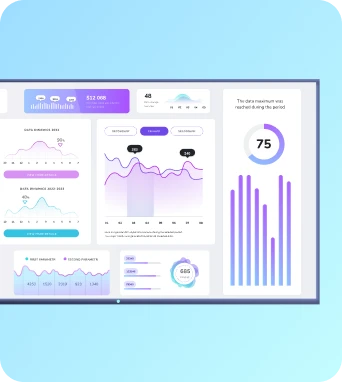BrightSign digital signage
BrightSign digital signage refers to BrightSign's line of dedicated hardware media players and associated OS/software used to deploy, schedule and manage content on screens. Known for reliability, solid-state performance, HTML5 support, interactive features and BrightAuthor/BrightSign Network management, widely used in retail, corporate, transportation and hospitality environments.
BrightSign Digital Signage
Overview of BrightSign digital signage
BrightSign is a family of commercial-grade digital signage media players and an ecosystem designed for reliable, 24/7 content playback in professional environments. BrightSign OS provides a hardened, appliance-style platform with native support for video, images, HTML5, and interactive I/O, and modern players include hardware-accelerated H.264 and H.265 decoding for high-resolution media. The product line ranges from entry-level models for simple playlists and single-screen deployments to more powerful units that handle multi-zone layouts, synchronized playback across displays, and complex HTML5 applications. For operators, this translates to a low-maintenance endpoint that minimizes freezes and reboots while delivering smooth, consistent playback across a signage network.
For content and deployment, BrightSign offers both on-device tools and cloud services. BrightAuthor and BrightAuthor:connected remain available for creating presentations and pushing content, while BSN.cloud provides provisioning, scheduling, diagnostics, and remote firmware management for fleets. Third-party cloud CMS products, including those that publish HTML5 timelines, commonly support BrightSign devices either by delivering web-based players the device can render or by integrating with BrightSign’s provisioning APIs. When planning a rollout, choose the player model based on resolution, codec needs, and interactivity requirements; ensure assets are encoded to supported formats; and account for storage and network bandwidth for large video libraries.
IT and signage managers should treat BrightSign deployments like any critical endpoint: define network access (DHCP or static IP), open only required ports, enable secure firmware updates, and apply strong access controls for the management interface. Take advantage of BSN.cloud or your CMS for health monitoring, snapshot capture, and remote logs to reduce on-site visits. For interactive or kiosk projects, confirm required GPIO, serial, or USB peripherals are supported by your chosen model, and validate power, mounting, and cooling requirements during site surveys to ensure long-term reliability.
Key features and capabilities
BrightSign players are purpose-built hardware media players optimized for reliability, low maintenance and consistent playback in commercial signage environments. When choosing a BrightSign device, match the player class to your content requirements: entry-level models handle basic images and standard-definition video with minimal interactive or HTML5 needs; mid-tier models provide full HD decoding and improved HTML5 rendering for browser-based widgets or lightweight web apps; high-end models include powerful H.265/HEVC 4K decoding, multi-layer composition, synchronized video wall support and expanded I/O for touch, sensors and GPIO control. Consider network and physical connectivity—wired Ethernet is preferred for stability at scale, while Wi‑Fi or cellular gateways may be required for temporary or hard-to-wire locations. Also check for PoE options, available USB and serial ports, and mounting/ventilation needs for your deployment environment.
Operationally, BrightSign’s platform emphasizes secure, unattended operation and centralized management. The players run a locked‑down OS designed to prevent tampering, support signed firmware updates and modern TLS for secure content transfer. BrightSign’s authoring and management tools (and many third-party CMSs) enable scheduling, remote health monitoring, and bulk provisioning. For reliable playback across a network, pre-cache large media files on the player, verify codec compatibility (especially for H.265 and alpha-channel video), and plan for content fallback if connectivity is lost. For multi-screen or interactive deployments, account for synchronization requirements, latency from networked control points, and firmware parity across units. Finally, involve IT early to define network segmentation, firewall rules and monitoring, and establish a process for firmware and content updates to maintain security and uptime for your signage fleet.
BrightSign hardware models and specifications
Keep the learning going...
Brightness adjustment tools
Brightness adjustment tools are combined software and hardware controls that regulate display luminance on digital signage. They manage automatic or manual brightness, respond to ambient light, enable scheduling and power-saving modes, and preserve readability and device longevity across TV dashboards and workplace screens.
Brightness uniformity
Brightness uniformity describes the evenness of luminance across a display, measured as the relative difference between the brightest and darkest areas. It is a practical quality metric for TV dashboards and digital signage that influences readability, perceived colour consistency and the integrity of brand assets across a signage network.
BrightSign HD1024
The BrightSign HD1024 is a compact commercial media player designed for professional digital signage. It supports full 1080p60 video playback, secure boot and networking features, and is built for reliable 24/7 operation. Suitable for small to medium installations where consistent performance and centralised control are required.



